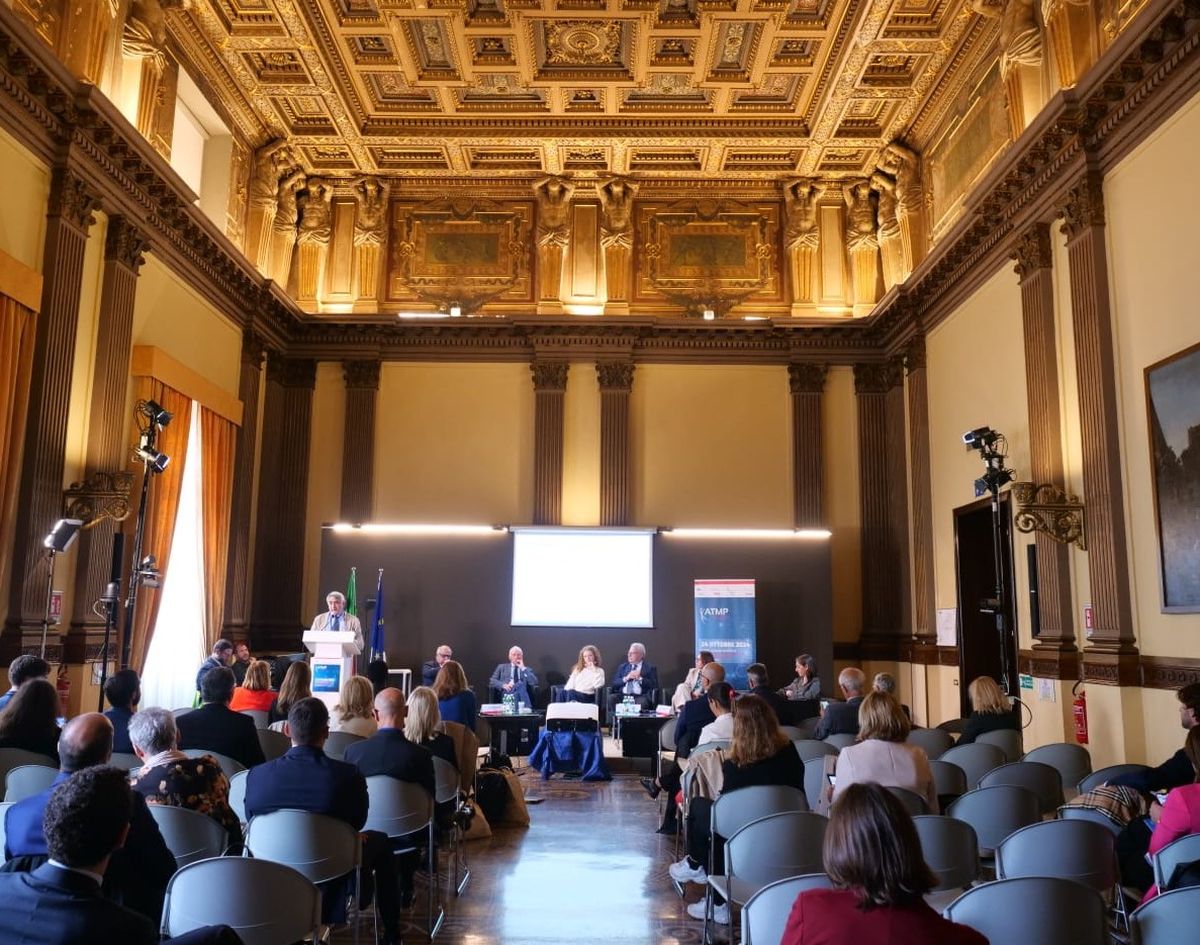ROME (ITALPRESS) – The 7th Italian Report on Advanced Therapy Medicinal Products (ATMPs) produced by ATMP Forum – www.atmpforum.com, founded in 2017 and since then a reference point for Advanced Therapies, was presented today. ATMP Forum is a virtual agora created with the goal of stimulating interaction and discussion among stakeholders on advances, clinical, economic, and organizational issues related to ATMPs.The Report 2024 presentation event, organized by PharmaLex Italy with the sponsorship of the Conference of Regions and Autonomous Provinces, Assobiotec, Farmidustria, Ispor, Sihta, University of Eastern Piedmont, and Uniamo, was realized with the nonconditional contribution of CSL Behring, Gilead Sciences, medac pharma, Novartis, Pierre Fabre, Roche, Pfizer, and Vertex Pharmaceuticals.The report presented drew an updated picture of approved and available ATMPs at the European level. The share of reimbursed ATMPs still remains very different from country to country, with Germany (where the drugs have immediate access to EMA-approved indications) having the highest share and Spain the lowest. The proposed revision of European drug legislation could facilitate the availability of ATMPs in all member states, and stimulate the possibility of establishing regulatory trial spaces on the recommendation of the EMA. The report delivers a cross-section of ATMP therapies and their timing of registration and entry into our country. In Italy, there are 12 advanced therapies approved and reimbursed for 21 indications, 2 ATMPs have completed the evaluation process for pricing and reimbursement, and 2 more are currently under evaluation. The total time from submission of the registration dossier to EMA to the first purchase of a reimbursed ATMP in Italy averages nearly 4 years, 1,406 days to be exact: of which 38 percent is spent on EMA evaluation, 37 percent on national evaluation, and 25 percent on the first purchase following publication of the AIFA Determination in the Official Journal.The report highlighted some characterizing elements of the Italian market. “The incidence of ATMP spending is still modest, as there are still few ATMPs available and the number of patients treated is limited,” explains Fulvio Luccini, Service Line Lead, Italy Market Access & Reimbursement, Pharmalex Italy and member of the ATMP Forum Steering Committee. “However, the ATMP pipeline is more numerous: 46 different advanced therapies have been identified with the potential to reach the Italian market between 2025 and 2029. Oncology and oncohematology account for 40 percent of the target of these studies, followed by neurology, ophthalmology and rheumatology. Rare indications still predominate (69 percent), but there are increasing numbers of ATMPs in development for diseases with wider prevalence. “ATMP spending is expected to increase given the significant pipeline and extensions of ATMP indications already available. – Luccini continues-according to the findings of this year’s report, NHS spending on ATMP at 5 years (2029) could reach between 675 and 940 million euros, depending on different scenarios. “Reimbursability by our National Health Service is a necessary condition for patient access to the drug, but not sufficient. Effective patient access to treatment also depends on the system’s ability to deliver treatments to new patients. The analysis carried out by the Italian Medicines Agency shows how advanced therapies are now available throughout the country, albeit with important disparities.Experts who worked on the report point out that access time and regional disparity could also be the consequence of important organizational effects on health care companies and regional health care systems of some ATMPs. The importance of planning for the entry of new ATMPs emerges, both through the identification of centers, upgrading of related multidisciplinary teams and structuring of the network, and through the verification of codified processes and adjustment of infrastructural, technological and IT resources. In summary, there is confirmed regional heterogeneity in terms of active centers-currently 56 percent of those enabled for CAR-T-and consumption that is almost double in the North compared to the Center or the South. “Advanced therapies pose various challenges for the system and the factual impact on people with rare and ultra-rare diseases.The lack of centers of excellence (ERNs) in Southern Regions creates, as we also pointed out in the MonitoRare report, a flow of health migration that affects 20 percent of adults and as many as 28 percent of children. For advanced therapies, this becomes even more problematic, given their high technological content, risking creating inequalities in access to treatments that have a high clinical value and significantly affecting families, both in economic terms and in terms of impact on their lives, due to the inconvenience of travel,” – commented Annalisa Scopinaro, President of UNIAMO – “It is therefore necessary to promote in the territories the development of new skills that allow patients to move as little as possible from their place of residence. It is also essential that access to innovation is rapid and uniform at all levels.””I believe it is fundamental to get out of the logic of “silos” and to identify efficient financial mechanisms that allow keeping up with therapeutic innovation”-said Luciano Ciocchetti, Vice-Chairman XII Commission for Social Affairs, Chamber of Deputies and author of the Preface of the VII ATMP Report-“I have long argued that the adoption of reimbursement mechanisms calibrated to the peculiarities of ATMPs could ensure sustainable access to these therapies and would also improve the management of healthcare resources, orienting it toward the patient. Focusing on these aspects will allow us to ensure an efficient healthcare system capable of providing the best possible care to citizens.””The 7th ATMP Forum Report and the contribution of the experts who spoke during the 2-day proceedings brought out a snapshot of the current state of ATMPs in Italy that lays the groundwork for a constructive dialogue on the future of advanced medicine in our country”- commented Patrizia Popoli, Director of the National Center for Drug Research and Evaluation, Istituto Superiore di Sanità; former Chair of the Technical Scientific Committee, AIFA – “The challenge will be to transform the promises of ATMPs into tangible realities within the most appropriate care pathways, maintaining and developing our ability to do research and experimentation, correctly assessing the consistency between cost and value to support the sustainability of the healthcare system, and making regional systems efficient to facilitate access on the ground. I am delighted to be able to make an active contribution, starting as early as the next edition of ATMP Forum for the benefit of our patients,” concluded Patrizia Popoli, a new member of the ATMP Forum Steering Committee.The VII Report can be found at the following link: https://www.atmpforum.com/report/
– Pharmalex press office photo -(ITALPRESS).

